LS2 Vs LS3 – Which Is Best?
It can be tough deciding which LS engine will be best for your needs, so we’re putting the LS2 and LS3 head-to-head to help you pick the perfect powerplant.
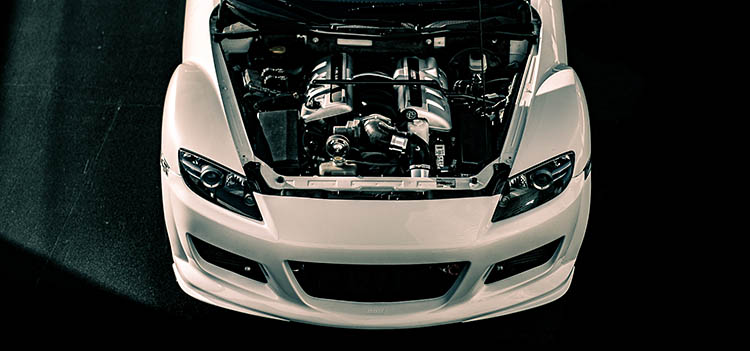
- Introduction
- LS2 Specs & History
- LS3 Specs & History
- LS2 and LS3 Differences
- Upgrades & Tuning Potential
- Should You Consider An LS Swap?
- Which Cars Have LS2 & LS3 engines?
- Conclusion
Introduction
We don’t think there’s much argument that the 90s were some of the most exciting times for the automotive industry, and as JDM manufacturers were producing the likes of the 2JZ-GTE and RB26DETT, America also had a trick up their sleeve.
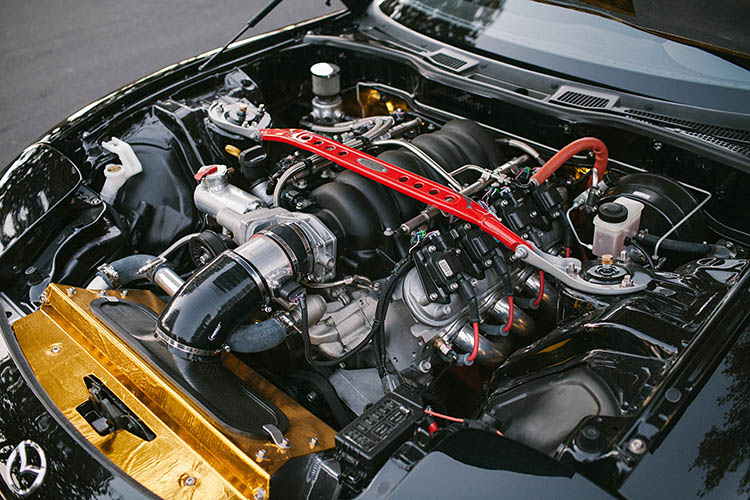
As Corvette introduced the brand new C5 in 1997, this stunning new ride not only looked a treat, but it was hiding something special under the hood - the mighty LS1.
With the birth of GM’s third-generation LS engine, it would quickly become a gamechanger in the automotive world and a worthy opponent of its Japanese rivals.
The revolutionary, aluminum 5.7-liter small-block engine produced 345 hp and 350 ft/lb in a compact, lightweight package.
However, despite respectable power figures in stock form, the motor’s true power potential was quickly realized by tuning houses across the US, which triggered real excitement.
Right away, the LS hype started causing a commotion in the drifting, track, and drag racing communities.

As the LS1 continued to be the tuners’ powerplant of choice, it was time for GM to prove that the best of the LS-series was yet to come.
It would appear that the LS2 and LS6 had been secretly mating in GM’s factories, and in 2005, the LS2 was born.
LS2 Specs & History
With its upgraded 6-liter displacement, the Gen IV LS2 engine combined the best of what the LS1 and the LS6 had to offer, providing an impressive final output of 400 hp alongside 400 lb/ft torque, with a redline of 6,500 rpm.
Suddenly, the LS1 was left overshadowed by the new kid on the block.
With the LS6 having proven itself in the market after its initial introduction in 2001, GM was able to integrate the best of both worlds into the LS3 – producing their most impressive LS engine yet.
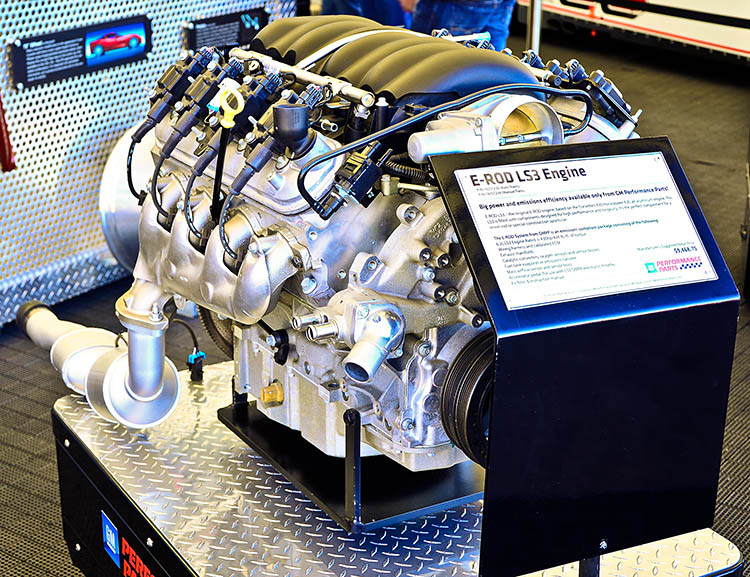
Utilizing the improved block casting from the LS6, larger bores, and a superior camshaft also helped provide the increased 400 lb/ft of torque throughout the rev range.
Not only was the LS2’s power output superior throughout the rev range, but the fuel economy improved, too.
The LS1 featured a compression ratio of 10.25:1 and the LS6 10.5:1. GM would increase this once again for the LS2 – which had the highest to date with 10.9:1.
If you’re interested to know more about how the LS1 compares to the LS2, we recommend checking out our LS1 vs LS2 guide.
LS2 Specs:
- Displacement: 6.0L (5.967 L)/364.1 cu/in
- Horsepower: 400 hp at 6,000 rpm
- Torque: 400 lb/ft at 4,400 rpm
- Compression Ratio: 10.9:1
- Cylinder Bore: 4.00 inches (101.6 mm)
- Stroke: 3.62″ (92mm)
LS3 History
Building upon the previous variants’ successes, the ever-improved LS3 hit the market as Corvette’s new base engine just three years after the LS2 initially hit the market.
Once again, the most significant upgrade would be the power increase, which now pushed out an insane 430 hp and 424 lb/ft torque in stock form.
Alongside the impressive power upgrade was an increased displacement which now provided a 6.2-liter (376 cu in) capacity, thanks to a larger bore of 103.25 mm.
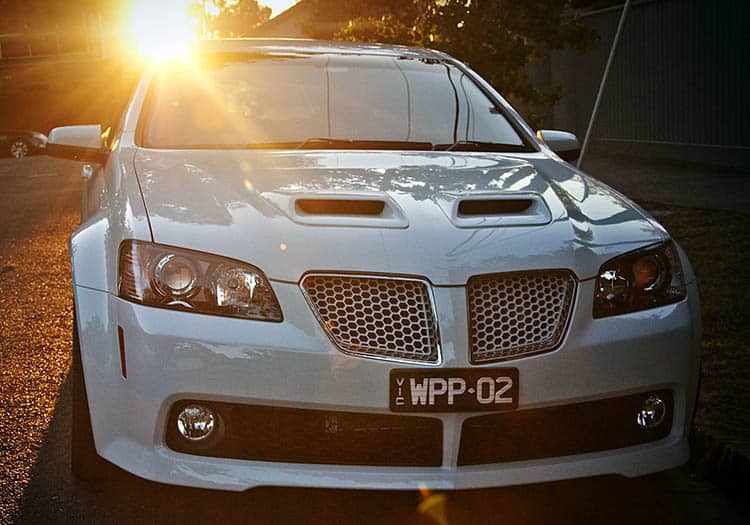
With higher-flowing heads, an improved camshaft with a 14mm lift, and a 10.7:1 compression ratio, it also featured additional upgrades such as a high-flow intake manifold and an improved valvetrain.
Injectors featured in the earlier LS7 engine were also integrated into the LS3, capable of providing 47 lb (27kg)/hr of fuel to the engine.
Not only was the LS3 popular in America, but Australian manufacturer HSV also decided to equip their entire catalog with the LS3, further revising the engine to produce 436 hp in stock form for the Maloo and Clubsport models.
Holden would also opt for the LS3 for both the VF II Commodore and WN II Caprice-V from 2015 for the Australian market.
LS3 Specs:
- Displacement: 6.2L/376 cu/in
- Horsepower: 430-436 hp at 5,900 rpm
- Torque: 424-428 lb/ft at 4,600 rpm
- Compression Ratio: 10.7:1
- Cylinder Bore: 4.065″ (103.25 mm)
- Stroke: 3.622″ (92mm)
LS2 and LS3 Differences
There’s no doubt that both the LS2 and LS3 are fantastic engines, but each generation of the LS engine series has improvements over its predecessor.
But, are the differences worth paying the extra money for? That’s for you to decide!
This section will undoubtedly help make your mind up as we look at the differences between the two variants.
Displacement
The first thing that you’ll notice that’s different between the two engines is the displacement.
While the LS2 was provided with a 6-liter capacity, the LS3 receives an increased displacement of 6.2-liters.
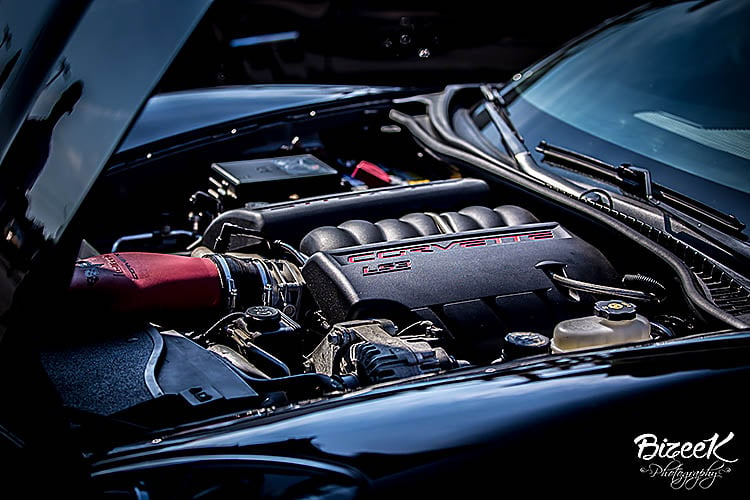
Despite the two engines having an identical stroke of 92.0mm, GM achieved an additional 12 inches of displacement by providing the LS3 with a larger bore. While the LS2 has a bore of 101.6mm, the LS3 has 103.25mm.
Not only does this help with providing the additional 30 horsepower gained with the LS3 (or 36hp with the HSV variants,) but it also makes the engine more rev-happy at the same time.
Block
The LS3 features a more robust engine block alongside the displacement and bore increase, with revisions made to the casting and machining, providing improved bay-to-bay breathing.
Cylinder Heads
Although the displacement and bore improvements helped with the power gains, the newly-revised high-flow cylinder heads provide improved flow-rate, helping squeeze out valuable additional horses.
Adjustments to the intake size, shape, and runner length, similar to the L92 engines, all help maximize the potential.
This cylinder head revision plays a vital role in the power gains, with LS enthusiasts claiming that fitting LS3 heads to an LS2 block will provide a 20 hp increase while the further power gains fall to the LS3’s larger displacement.
Valvetrain
With the LS2 using 2.00” (50.8 mm) intake valves, the LS3 increases this to 2.16” (55 mm,) which reduced the mass by 13 percent.
Combined with the intake valves’ lightweight hollow stems, these help the engine achieve the newly-increased 6,600 rpm limit.
While the LS2’s high load valve springs are also found on the LS3, GM has opted for the L92’s larger 1.60” (40.4mm) diameter exhaust valves.
Intake
Flow-rate was one of the main priorities in the LS3, and the intake was another opportunity for improvement.
With the acoustically-tuned intake manifold on the LS3, the revised cylinder heads receive optimal airflow thanks to straightened intake runners.
This new design helps breathability and provides improved acoustics thanks to a special foam to radiate engine noise.
Sound is further improved with the new ‘beauty cover’, shielding the rocker covers, including an acoustically tuned insert to provide optimal acoustics.
Power increases from this are often discussed, with many claiming that the intake revision likely provides around 5-horsepower gains but undoubtedly helps further when tuning comes into play.
Pistons
Larger pistons unique to the LS3 engine are also designed to maximize the high-rpm performance capability.
Injectors
Using high-flow injectors previously found in the 7.0L LS7 engine, these provided an improved 5.0 g/s (47lb/hr) of fuel to the LS3’s engine.
Exhaust
The exhaust will vary between models, but the LS3 Corvette received an active exhaust system that features a butterfly valve opening in the upper rev-range.
The “tri-flow” design reduces restriction and also makes for a more pleasant cruising experience thanks to decreased sound when not desired.
Emissions
Revisions to the engine combined with the small-block layout enable the LS3 to pass the stricter Bin4 requirements, meet the newer emissions standards, and avoid higher-tier gas tax.
Camshaft
A revised camshaft was included, alongside updated camshaft timing.
Upgrades & Tuning Potential
With the improvements mentioned in the previous section, it should come as no surprise that the LS3 is the superior engine of the two for tuning and upgrading.
While the robust block will keep the huge-power hunters satisfied, the cylinder heads and intake refinements also allow the engine to flow more freely to the redline.
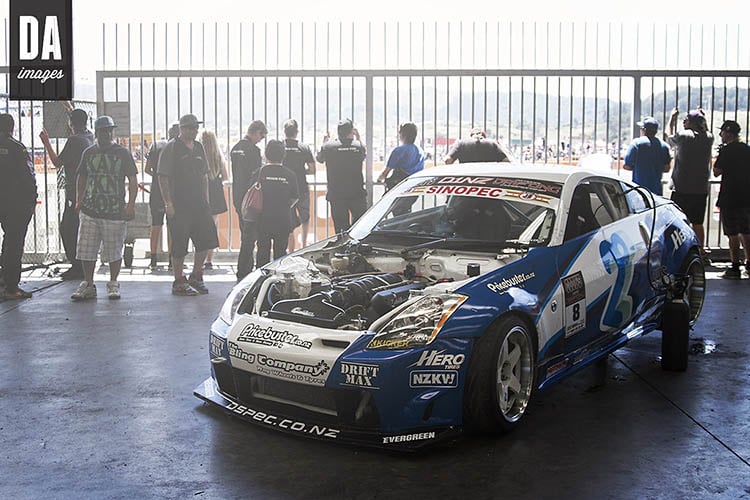
When it comes to pure power in stock form, LS2 owners have the opportunity to install LS3 heads, which will close the power gap with a 20 horsepower increase.
However, the increased displacement and increased bore size will continue to make the LS3 the more desirable choice, which will not be quite as simple to achieve for LS2 owners.
As always, with LS engines, stroker kits will change the game, and forced induction can provide colossal power gains.
While forced induction will help the LS2 engine outperform the LS3, doing the same upgrades to the LS3 will always yield more impressive results thanks to the additional refinement.
Therefore, if significant power is your goal, then the LS3 will undoubtedly be the better choice.
With deep enough pockets, you’ll eventually be able to achieve more than 1200 hp from an LS3 powerplant, with the potential to do crazy things such as this:
If you’re interested in building a decent spec car, make sure you check the How Much Do You Need for a Top-Tier Tune-Up? guide.
Should You Consider An LS Swap?
You may have heard the term ‘LS SWAP THE WORLD,’ and the drift scene certainly hasn’t managed to escape the LS love.
We’ve witnessed LS swaps in just about every chassis imaginable over the years, and with their compact size and weight, combined with reasonable price tags, it’s easy to see why so many are opting for V8 swaps.
While there are alternative JDM options out there, the colossal displacement and forced-induction friendliness of the LS family often make them so appealing.
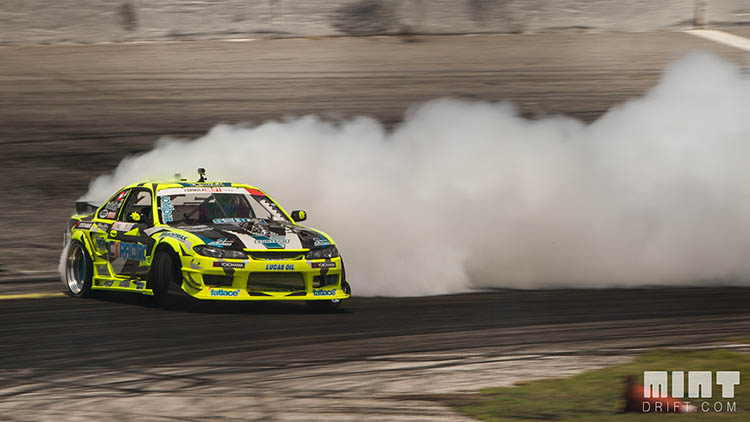
With so much untapped power potential and robust internals, an LS turbo upgrade will enable you to reach some impressive power figures compared to trying to do so with the likes of an SR20DET.
If you’re interested in carrying out an LS swap but not sure which chassis you think would be the best fit, then make sure you check out our Best Project Cars guide for some reasonably-priced ideas.
Here are a few more LS swap ideas to get your creativity flowing:
Which Cars Have LS2 & LS3 engines?
From 2005-2009, the LS2 could be found in the following cars:
- Cadillac CTS-V (06-07)
- Chevrolet Corvette C6
- Chevrolet TrailBlazer SS
- Chevrolet SSR (Super Sport Roadster)
- Holden Special Vehicles (HSV)
- Pontiac GTO
- Saab 9-7X Aero
- Vauxhall Monaro VXR
From 2007-2017, the LS3 could be found in the following cars:
- Chevrolet Camaro SS Convertible
- Chevrolet Camaro SS Coupe
- Chevrolet Corvette
- Chevrolet Corvette Grand Sport
- Chevrolet SS
- Drakan Spyder
- Holden VF II Commodore
- Holden WN II Caprice-V
- HSV Clubsport GXP (Limited Edition)
- HSV Clubsport R8
- HSV Clubsport R8 20th Anniversary Edition (Limited Edition)
- HSV Clubsport R8 Tourer
- HSV Grange
- HSV GTS
- HSV Maloo R8
- HSV Maloo GXP (Limited Edition)
- HSV Senator Signature
- HSV Senator SV08 (Limited Edition)
- HSV W427
- Pontiac G8 GXP
- Vauxhall VXR8
Conclusion
Although many LS3 owners will probably disagree, we’ll be honest and say that we don’t feel that there’s a massive difference between the two engines.
Sure, in the head-to-head stats, the LS3 is undoubtedly superior. However, when it comes to getting behind the wheel of an LS2 vs an LS3 powered-car in stock form, you’re not going to notice a mind-blowing difference.
However, we will say that the LS3 would be the better choice for those of you who aren’t shy when it comes to achieving the engine’s full potential, and you’re willing to throw the necessary cash around to do so.
While the LS3 allows for maximal power delivery when pushed to the boundaries, you’re not likely to see huge differences between the two cars when heading out on a fast road blast around the canyons.
If you’re planning a crazy-horsepower drift or drag racing build, then the refinements carried out to the LS3 will provide far better breathing and revving capabilities, especially for those that are going down the forced induction route.

For those on a budget, the LS2 is going to be the better option. Not only is it far cheaper, but you’ll also have the opportunity to consider fitting the LS3 cylinder heads and still have the forced induction upgrade capabilities further down the line.
If you’re not just buying an engine, and you’re looking for the perfect car for your needs, vehicles with an LS2 are often sourced far more cheaply, and unless you’re absolutely in love with an LS3 engined-car, it’ll produce far more bang for your buck.
Although the LS3 is far more abundant and easily sourced than the LS2, LS3 production only ceased three years ago, so it’s still considered a relatively new engine in the grand scheme of things and likely comes with a price to match.
With the money saved, you can begin splashing out on upgrades, which will likely see you minimize the power difference between the two at minimal expense.
If you think you might be wanting to go for immense power further down the line, then the LS3 is likely to be worth forking out for initially, rather than having to upgrade later down the line.
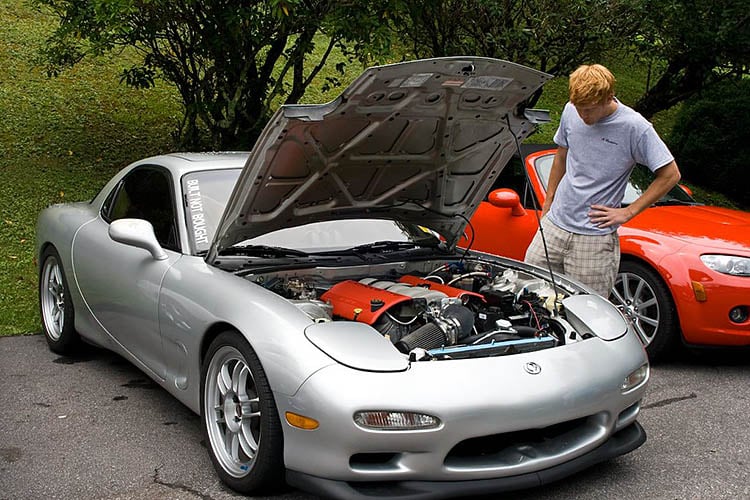
Both of these engines are fantastic, and neither will disappoint.
Is the LS3 a better choice overall? Yes.
Would we rather have a turbo or supercharged LS2 over a stock LS3? Absolutely!
Are there other alternatives to consider on the market? You bet.
Two of the initial considerations for V8 enthusiasts should be the LT1 and LS1 engines.
For those looking to keep it JDM, you could consider the 1JZ, 1.5JZ, and 2JZ-GTE engines.
If you’re after a crazy-sized V8, look no further than the Vortec 8100.
Alongside these, we would also recommend checking out the LM7 engine, GM’s Gen III 5.3L small-block V8.
Although the LM7 might not be as refined as the LS engines, it’s often considered an underdog for those looking for a bargain-priced V8 powerplant.
So, there we have it! We hope that we’ve covered everything you could want to know about LS2 and LS3’s in this guide.
Thank you for reading our LS2 vs LS3 guide.
If you enjoyed this article, please share it with the buttons at the bottom of your screen. If you’ve found this information useful, then please take a moment to share it with other LS, V8, and tuning enthusiasts. We appreciate your support.
Photography credits
We thank the following entities for the use of their photography in this article:


 (4 votes, average: 4.75 out of 5)
(4 votes, average: 4.75 out of 5)














